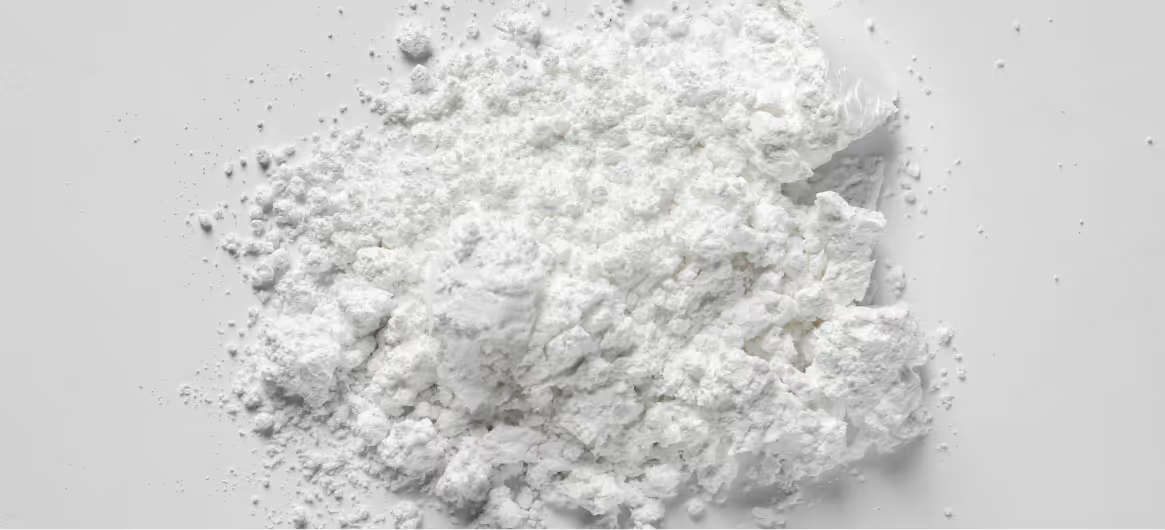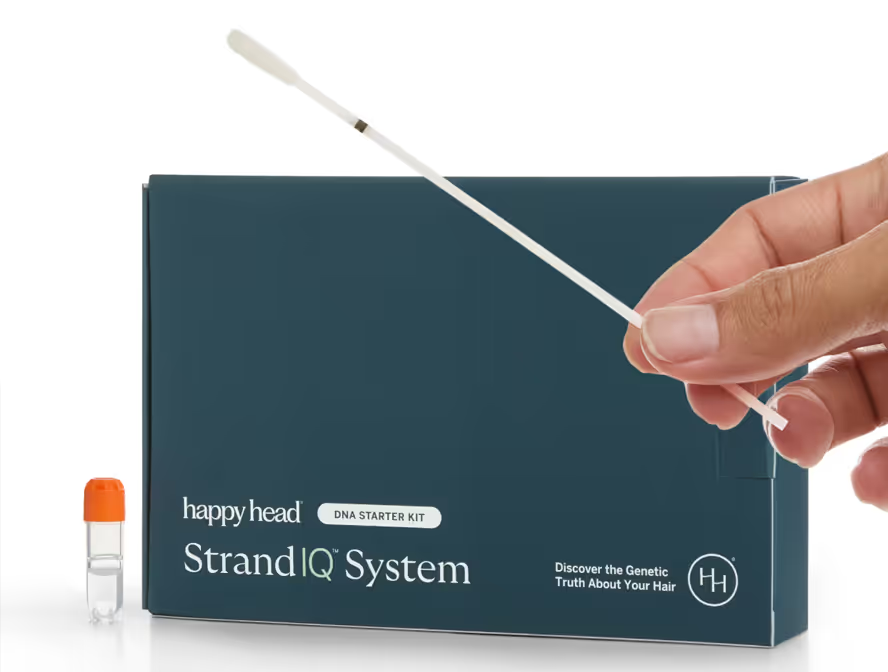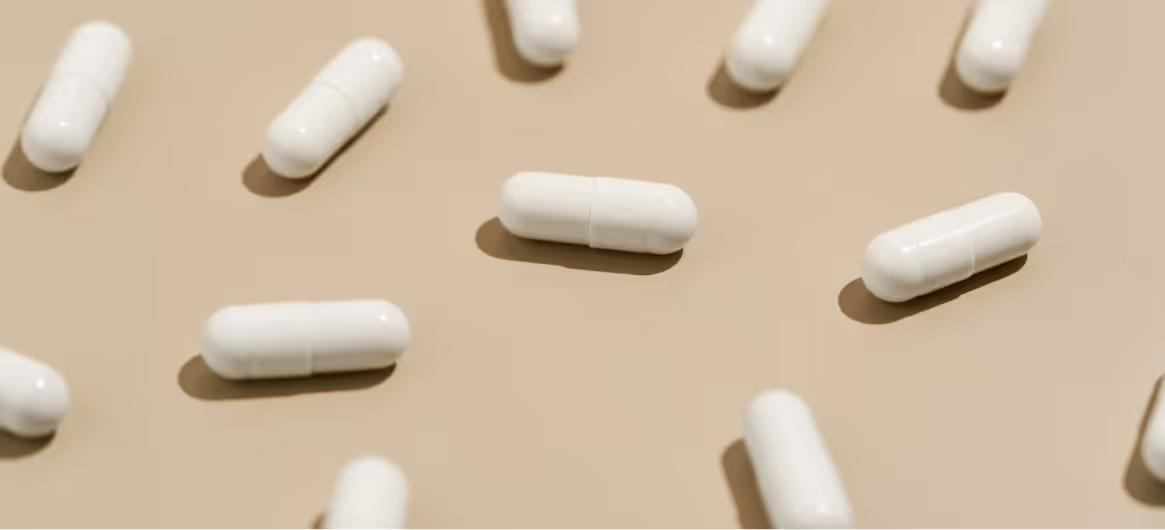Estradiol is a form of estrogen that plays an important role in supporting scalp health, hair density, and follicle activity. In both men and women, balanced estradiol levels can help extend the hair growth phase (anagen) and counteract androgen-driven thinning. One of the key enzymes in this process is aromatase, encoded by the CYP19A1 gene, which converts testosterone into estradiol.
Genetic variations in CYP19A1 can influence how much aromatase your body produces and, in turn, how effectively your follicles benefit from estradiol therapy. Understanding your genetic profile can help determine whether estradiol is likely to be a strong, moderate, or limited part of your hair restoration plan.
How Genetics Influence Estradiol Effectiveness
The CYP19A1 gene plays a key role in how your body processes estradiol. Some people naturally have higher aromatase activity, which means more testosterone is converted into estradiol—leaving less testosterone available to become DHT, a major driver of hair loss. Others have lower aromatase activity, resulting in more testosterone and higher DHT levels. Adding external estradiol can lower testosterone production. Knowing your CYP19A1 variant can help predict how you might respond and guide the best treatment plan for you.
Efficacy Levels and What They Mean
Low Estradiol Response – Your CYP19A1 variant is linked to normal or high aromatase activity, meaning your body may efficiently convert testosterone to estradiol. This can limit estradiol’s impact on hair regrowth.
Moderate Estradiol Response – Your aromatase activity is average, suggesting you may experience some benefits from estradiol therapy, but results could vary based on other factors like age, hormones, and scalp health.
High Estradiol Response – Your variant is associated with low aromatase activity, which indicates potentially higher natural testosterone and DHT levels. Estradiol treatment may be used to affect hormonal balance to lower systemic testosterone and DHT levels, supporting thicker, fuller hair.
Top Strategies for Low Estradiol Effectiveness
If your Happy Head StrandIQ™ analysis predicts a low estradiol effectiveness:
- Explore alternate treatments
Your Happy Head dermatologist may suggest combination treatments such as topical minoxidil, low-level laser therapy, or anti-androgens like spironolactone (for women) or dutasteride (for men). - Expand your scalp care routine
Focus on scalp circulation and inflammation control through regular exfoliation and antioxidant-rich scalp care. - Check levels regularly
Monitor hormone levels with your physician to ensure optimal balance when combining therapies.
Optimizing Results at Moderate Effectiveness
If you’re moderately likely to respond to estradiol for hair loss prevention:
- Work closely with your doctor
Continue with estradiol therapy only if recommended by your healthcare provider. - Find the right combo for you
Combine with synergistic treatments such as peptide serums, microneedling, or caffeine-infused topicals. - Choose calming products
Maintain scalp barrier health with nourishing shampoos and conditioners to reduce irritation and dryness.
High Likelihood: Advanced Strategies
If your StrandIQ™ analysis suggests high benefit from estradiol alone:
- Stick to a routine
Maintain consistent estradiol use as prescribed to maximize potential hair density improvements. - Optimize your lifestyle
Support hormone balance through stress management, adequate sleep, and a diet rich in healthy fats. - Consult with your physician
Work with your doctor to regularly monitor hormone levels and adjust dosing as needed to avoid imbalances.
Why This Matters for Your Hair Growth Plan
Identifying your CYP19A1 status allows for a more strategic, personalized approach to hair restoration. This genetic insight helps determine whether estradiol should be a primary treatment or paired with other therapies for best results—saving time, resources, and trial-and-error frustration.
Resources
StrandIQ SNP Marker Count: 2
StrandIQ Genes for Trait:
CYP19A1
References:
Haiman, C.A., et al. (2007). Genetic variation at the CYP19A1 locus predicts circulating estrogen levels but not breast cancer risk in postmenopausal women. Cancer Research, 67(5), 1893–1897. PMID: 17325027.
Jiang, J., et al. (2010). Association of genetic variations in aromatase gene with serum estrogen and estrogen/testosterone ratio in Chinese elderly men. Clinica Chimica Acta, 411(1–2), 53–58. PMID: 19818337.
Nebert, D.W., et al. (2013). Human cytochromes P450 in health and disease. Philosophical Transactions of the Royal Society B: Biological Sciences, 368(1612), 20120431. PMID: 23297354.
Zhang, X.L., et al. (2012). SNP rs2470152 in CYP19 is correlated to aromatase activity in Chinese polycystic ovary syndrome patients. Molecular Medicine Reports, 5(1), 245–249. PMID: 21972004.
This content, including StrandIQ™ DNA analysis reports and any Happy Head products and/or services referenced therein, is for informational and cosmetic purposes only. It is not intended to diagnose, treat, cure, or prevent any disease. This content does not constitute medical advice and should not be used to make healthcare decisions. References to prescription treatments are educational in nature. Always consult a licensed healthcare professional for any medical concerns or treatment decisions.








.avif)

